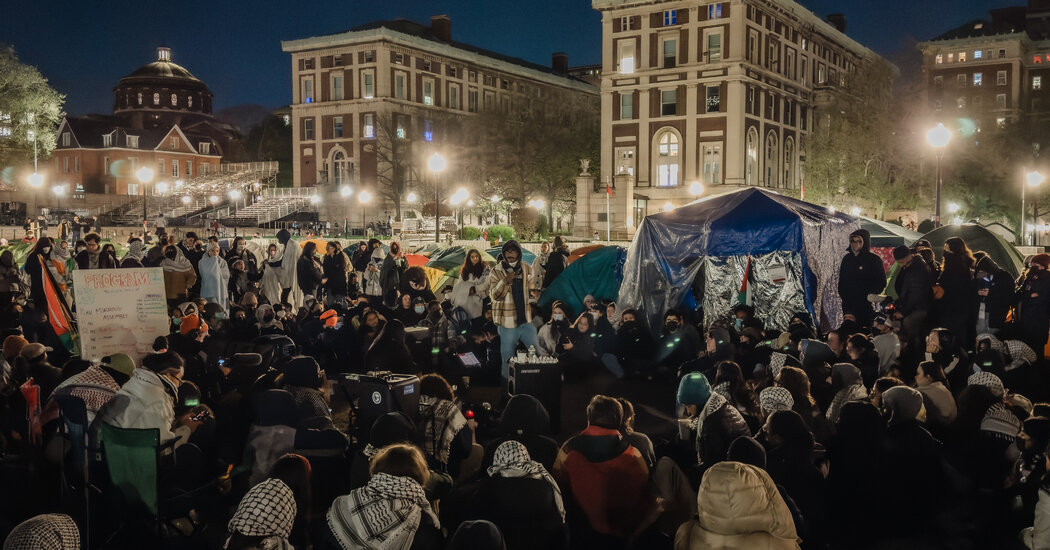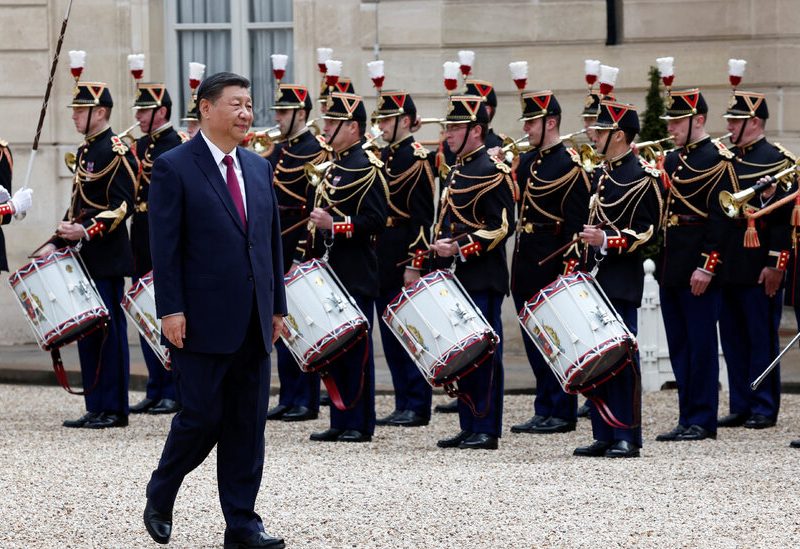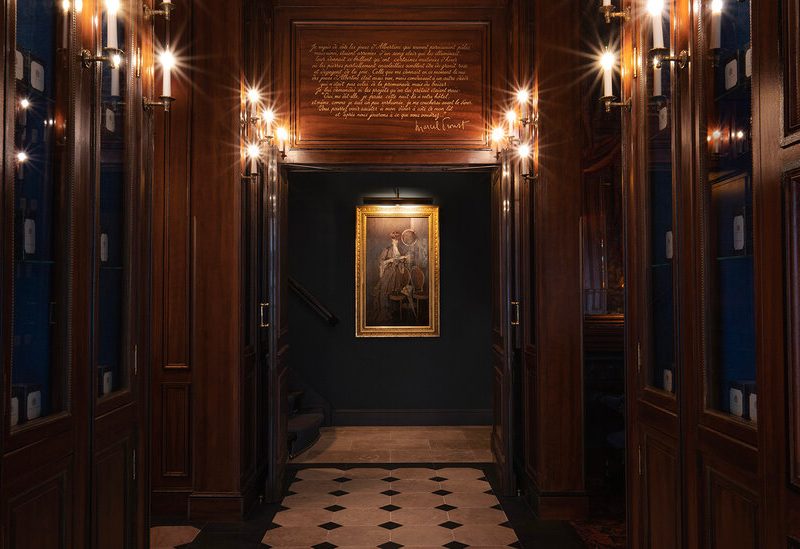The past week has seen a growing wave of protest encampments and other demonstrations on university campuses across the United States, many of which have been met by mass arrests and other forceful police actions, as well as intense media scrutiny. And the demonstrations continue to spread.
But campus protests overseas have been sporadic and smaller, and none have sparked a wider student movement.
In Britain, for example, small groups of students temporarily occupied university buildings on the campuses of the University of Manchester and the University of Glasgow. But they never generated national news or set off a widening wave of demonstrations.
The protest wave may yet spread to foreign universities. There were some early signs of that this week. On Wednesday, students set up a protest encampment on the campus of Sydney University in Australia. On Friday classes were canceled at Sciences Po, an elite university in Paris, because of a student protest there.
But that still would leave the question of why this particular protest movement caught fire and spread at American universities first. The answer, experts say, has more to do with the partisan political context in Washington than with the events in Gaza.
The ‘ovation’ effect: Why the protest wave began with Columbia
Protests, like many forms of group behavior, can be contagious.
One way to understand how protest movements spread is the “ovation model,” said Omar Wasow, a political science professor at the University of California, Berkeley, who studies how protest movements can affect politics.
In a theater audience, “if some people in the front stand up, then other people start to stand up, and it’s a cascade through the auditorium,” he said.
In this case, he said, it is not surprising that the “ovation” began last week at Columbia University. The university’s proximity to national media in New York and its status as an Ivy-League institution give it a position of prominence, he said, that is similar to someone in the front row of an auditorium. So pro-Palestinian protests there drew wider attention than they might have elsewhere. In addition, the campus is also home to a large population of Jewish students, many of whom have said that they feel afraid of antisemitic harassment or attacks from protesters. This expression of fear fueled more media coverage and political scrutiny.
More than 100 demonstrators were arrested on April 18 after Columbia called in the police to empty an encampment of pro-Palestinian protesters, fulfilling a promise to Congress by Nemat Shafik, the school’s president, that she was prepared to punish people for unauthorized protests on campus.
But when the arrests came, they sparked further action in solidarity with protesters — and counter reactions from those who saw the protests as antisemitic or wished to show support for Israel, in a wave that quickly spread across the country.
“The conflict there then contributes to this great cascade, to other campuses joining in, and other media around the country and around the world paying attention,” Wasow said.
The events would not have gained so much prominence without the arrests, said Daniel Schlozman, a political science professor at Johns Hopkins University who studies U.S. social movements and party politics.
But the arrests were more than an isolated decision by one university president. They were the result of the particular political and legal context in the United States that made Columbia the most likely place for an “ovation” to begin.
The unique politics of U.S. campus protests
“Basic politics is to find issues that unite your side and divide the other side,” Schlozman said. And the war in Gaza has turned out to be a particularly potent example of that for Republicans.
The Republican Party is broadly united in its support for Israel. Republicans have also long taken aim at universities as bastions of leftist ideology, seeking to portray them as incubators of radicalism on issues of race and gender, and hostile environments for anyone who doesn’t adhere to those ideologies.
The Democrats, by contrast, are far more divided over Israel, the war in Gaza, and when and whether anti-Israel protests spill into in antisemitism.
So for Republican lawmakers, criticizing university presidents for failing to protect Jewish students from antisemitism is a useful political issue with the potential to deepen divisions among Democrats — one that, unsurprisingly, they have pursued vociferously.
University presidents are in many ways soft targets, Schlozman said.
“Inside universities, administrators are trying to assuage multiple constituencies: donors, protesters, faculty,” he said. “But those alignments are lining up imperfectly into national politics.” Actions that might calm tensions within campus communities could invite political scrutiny from outside — and the opposite is also true, as the arrests on campuses across the country this week have shown.
Last December, Republican lawmakers grilled university presidents over their handling of protests against the war in Gaza, in hearings that contributed to the eventual resignations of the presidents of the University of Pennsylvania and Harvard. Shafik, Columbia’s president, had reason to fear for her job when she was called before Congress last week, where she vowed to punish student protesters if necessary. That same evening, she called the police to campus.
It is not clear exactly what role the congressional questioning played in her decision. But her actual motivation is less relevant than the impression it gave to people on all sides of the issue that Republican pressure had led to the mass arrests. That would have acted like a “bat signal,” Schlozman said, to those on different sides of the issue.
To the Republican politicians who have turned criticism of campus protests and antisemitism into a cause célèbre, the arrests sent a message of “look, we are winning. We can divide our opponents’ coalition,” he said.
To students and others who might have sympathized with the protesters without joining them, the shock of the arrests may have galvanized action rather than passive support. And to faculty and others in the political center, anger at the arrests themselves, rather than the underlying political dispute over the war in Gaza, led many to join the protests.
In other countries, less drama meant less attention
In other countries, by contrast, protests and antisemitism on campuses have thus far not been political flash points. (Though there have, of course, been large demonstrations in cities around the world against the war, and against antisemitism.) In February, students at Glasgow University occupied a campus building for 15 days, but left after negotiations with a senior university official. The story barely made local news.
In France, there was a brief outbreak of political outrage last month after a Jewish student claimed that she had been barred from a university event because of her religion, but it passed quickly when other students, some of them Jewish, offered a different version of events.
And although several university heads were called before the French Parliament to discuss antisemitism on campus, the resulting discussion got almost no media attention — a far cry from the closely watched hearings in the United States.
Ultimately, nonviolent protests are most effective when they generate some sort of “drama,” Wasow, the professor, said. In other countries, a lack of drama may have kept campuses relatively quiet.
But now that the ovation has started, that may change.



